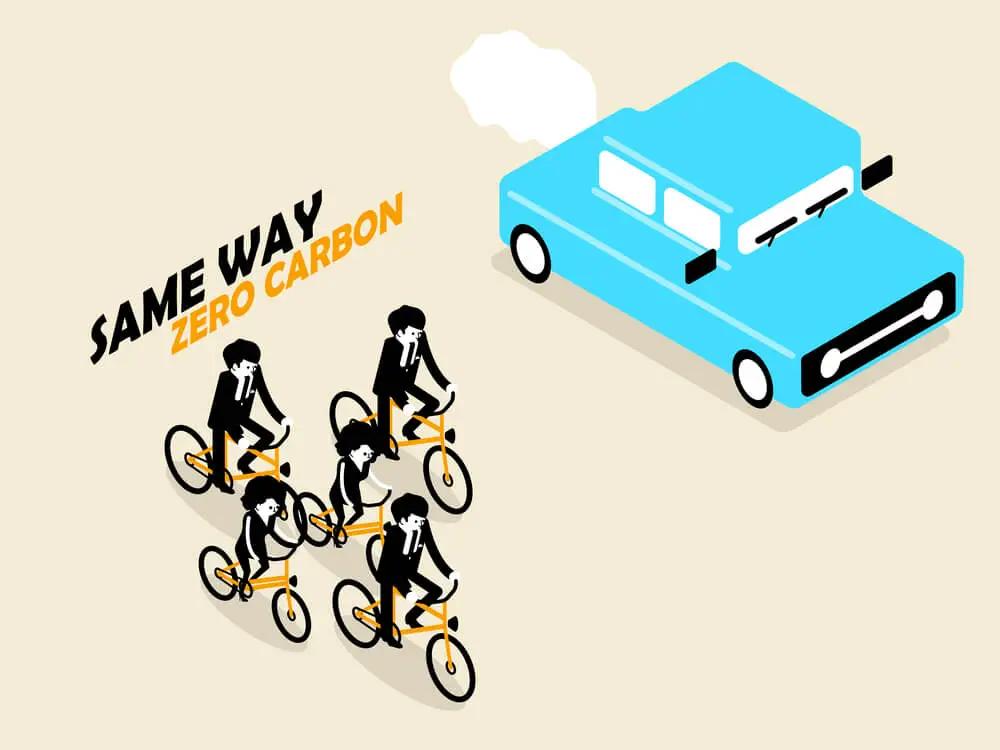What is zero or low carbon energy? Energy sources which do not release carbon dioxide as a byproduct are considered zero or low carbon energy sources.
These include solar, wind, hydro, and nuclear generated forms of energy.
In order to implement zero carbon energy solutions, we need to focus on electricity producing solutions instead of fuel burning processes which release carbon dioxide into the atmosphere.
There are four common types of zero carbon energy solutions.
Solar, wind, and hydro energy are all considered renewable sources of energy given their hypothetically limitless supply, while nuclear – which relies on the amount of uranium available – is not.
In this article, we will break down the four different varieties of zero carbon energy sources and provide statistics showing their efficacy in combating the growing concentration of carbon dioxide output from traditional fuel burning practices.
We will also provide examples of companies involved in producing these zero carbon energy solutions whose stocks are on the rise and the goals of different countries to reach 100% zero carbon energy production.
Solar Energy
Energy from the sun can be captured using solar panels which convert the light energy into electricity.
Solar panels can be installed on rooftops or in fields and can power homes or large businesses.
Since different parts of the world receive varying amounts of sunlight, solar energy power is more efficient at latitudes closer to the equator.
How effective is solar energy? Check out these statistics below to find out!
- Almost 93 billion solar panels are used to generate electricity all over the world
- Solar energy produced in America equals 2% of overall electricity generation in the country which replaces 100 million metric tons of carbon output used by conventional fuel burning
- Every second, the sun generates enough light energy to meet the world’s power needs for 500,000 years
Wind Energy
Energy can be harvested from the wind through the use of wind turbines.
As the wind moves the blades of the turbine, a rotor connected to a generator creates electricity available for use.
Smaller turbines that stand at less than 200 feet can produce up to 100 kilowatts of power while larger turbines up to 800 feet tall can generate 1-10 megawatts!
Does anyone really use giant fans to power their homes? Let the numbers speak for themselves:
- Almost 60,000 wind turbines have been erected in America with a potential for generating almost 110 gigawatts of power
- Wind energy produced in America has the potential to replace 189 million metric tons of carbon output used by conventional fuel burning
Hydro Energy
Energy harnessed from the movement of water can be produced in a few different ways:
- Installation of water-wheels in naturally high flow river currents
- The controlled release of water through turbines from a dammed reservoir downstream to a river or lake
- Forcing water upstream from a larger reservoir to a smaller one
In all of these instances, the production of energy is similar to the concept used by wind turbines – the movement of water over a turbine creates electricity stored by a generator.
Let’s see how hydropower compares to our previous examples:
- About 7% of electricity produced in America is from hydropower equaling approximately 300 billion kilowatts
- The U.S. currently has almost 1,500 hydropower plants in operation all across the country
- Hydropower generated electricity over the past 50 years has replaced 100 billion metric tons of carbon output used by burning conventional fuel
Nuclear Energy
Nuclear energy is produced by the splitting – or fission – of uranium atoms which boils water that turns to steam which moves turbines to create electricity.
While the three previously mentioned natural energy sources rely on cooperation from Mother Nature, nuclear energy can be produced indefinitely, which makes it the most efficient method of generating electricity.
Taking a look at the statistics, nuclear energy seems to a pretty powerful zero carbon energy solution:
- Nuclear energy is responsible for 20% of the electricity generated in the U.S., and 10% of the electricity generated all over the world
- Over 440 nuclear power plants are currently in operation worldwide, with almost 100 of those residing in the U.S.
- Nuclear energy generated electricity replaced approximately 470 million metric tons of carbon output in the United States alone last year
Zero Carbon Energy Stocks
Going green and cutting out those carbon outputs seems to be the way of the future.
As such, the popularity of investing in companies dedicated to producing energy using zero carbon energy solutions is on the rise.
While the risks might still be high, many zero carbon solutions are starting to take hold and gain popularity in the modern market.
A few examples of such companies include:
- Zero carbon energy producing companies pursuing solar, wind, and hydro power avenues such as Clearway Energy, NextEra Energy Partners, and Algonquin Power and Utilities Corp.
- Solely solar power producing companies such as Canadian Solar, SunHydrogen Inc, and SunPower Corp.
- Electric vehicle producing companies such as Ford and Nio
Zero Carbon Energy Goals
The ultimate purpose of pursuing the use of zero carbon energy sources and replacing carbon producing fuel burning practices is to decrease the amount of carbon dioxide in the atmosphere.
The United States has proposed a goal of reaching total zero carbon energy producing electricity by 2050.
According to the Biden Administration, the pathway to achieve this involves cutting the cost of solar energy and increasing the production of wind energy.
Other countries around the world have joined in this initiative to reach full zero carbon energy production by 2050 including:
- South American countries such as Costa Rica, Panama, Argentina, Colombia, and Chile
- European countries such as the United Kingdom, Spain, Portugal, France, Switzerland, Ireland, Iceland, Germany, and Denmark
- South Africa
- South Korea
- Japan
- New Zealand
- Canada
Looking Towards a Carbon-Free Tomorrow
Overall, there are some great carbon energy sources to traditional carbon producing methods which utilize our planet’s resources without the harmful side effect of raising carbon dioxide concentrations.
Many countries and companies are looking to the future of the energy industry and our world may look like a very different place in 2050 than it did 100 years ago.



